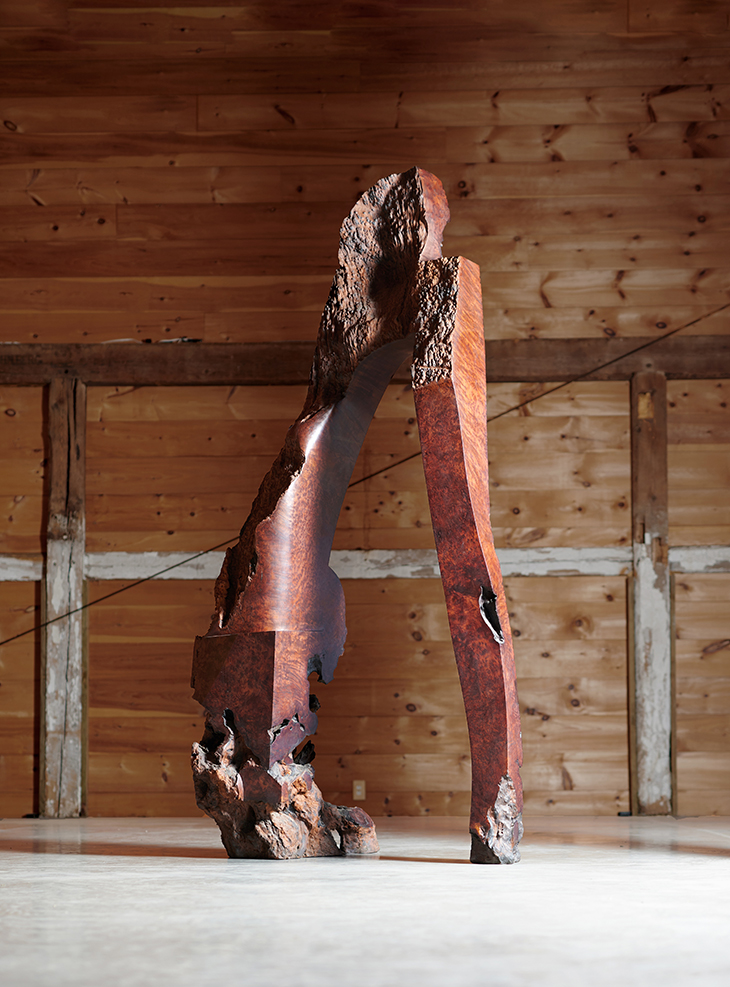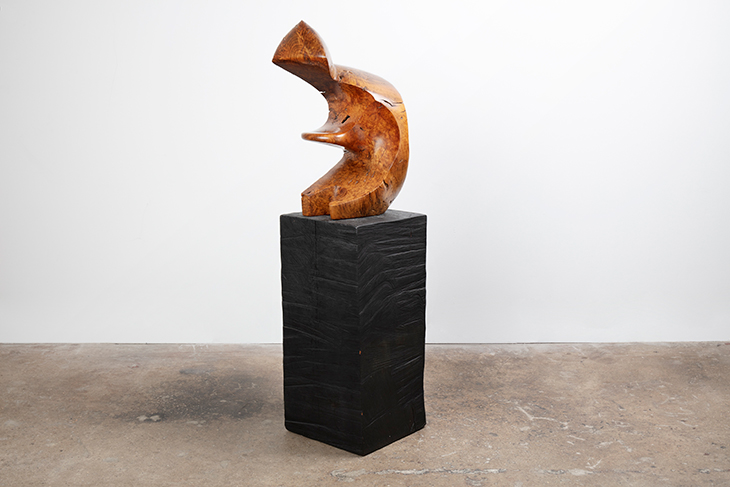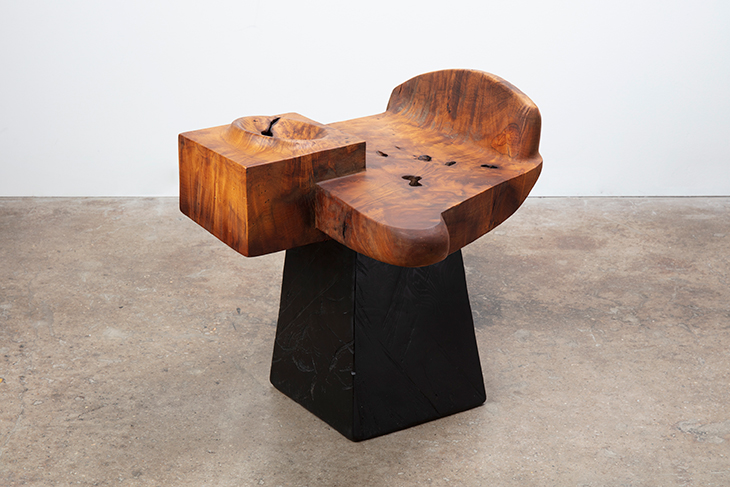The date is not recorded with absolute certainty, but one day in the early 1950s, a young American soldier stationed in Korea named J.B. Blunk paid a visit to a craft store in Tokyo when Isamu Noguchi and his wife, Yamaguchi Yoshiko, happened to be present and they got to talking. Blunk had become obsessed with ceramics while studying art at UCLA, and his knowledge was soon to deepen. ‘It was one of those meetings that change your life,’ Blunk told an interviewer nearly 30 years later. ‘Everything that happens after that can relate back.’ Noguchi introduced him to the master potter Kitaoji Rosanjin, and Blunk apprenticed with him before moving on to Toyo Kaneshige. Blunk stayed in touch with Noguchi, telling that interviewer that he ‘was much more aware of where I was going, of my search as an artist, than I was’.
Such humility belies the extraordinary character of that search. Returning to the United States in 1954 and soon settling in sylvan Inverness, California, Blunk fired charismatic ceramics and, probably most famously, carved furniture and abstract wood sculptures that are both graceful and mischievous. They contain mysteries. He made jewellery, too, and stone works, honing a playful simplicity that is never austere. A solo exhibition of about 50 pieces in various materials at Kasmin in New York – the first in the city for the cult figure, who died in 2002, at 75 – whets the appetite for a sprawling Blunk retrospective. (Regrettably, a survey at the Oakland Museum of California in 2018 did not travel.)
Wishbone (1977), J.B. Blunk. Courtesy J.B. Blunk Collection and Kasmin

The pièce de résistance here is Wishbone (1977), an 11-foot-tall arch of redwood recalling its title or perhaps a pair of giant legs. It’s also an ideal introduction to Blunk, showing off his restraint, his ability to use a crack or other abnormality for his own ends. He smoothed most of its surface to a fine sheen but left some sections untouched, making it appear as if the sculpture is still emerging from the raw material, still part of the outside environment. The juxtaposition between the rough-hewn and carefully rendered passages makes its subtle details – a curving slope here, a tiny ledge there – all the more enthralling. In the gallery a sliver of light pierces a minute hole in one craggily lower section, though it’s impossible to know if it’s the work of Blunk or nature.
When Blunk was operating in an exuberant mode, an alluring air of Surrealism pervades, but never dominates, his creations. Madonna #1, a wild array of bends in blonde myrtle or laurel burl, suggests a form in an Yves Tanguy painting or a guffawing duck-billed animal. (The Surrealist painter Gordon Onslow Ford, whom Blunk also met via Noguchi, was a friend and neighbour.) A huge eucalyptus table of c. 1985–94, with a grey stone jutting through its top, reveals a smorgasbord of surprises as you walk around it: sly shifts in texture and lead inlay treated to resemble worn leather. (It was commissioned by the painter Sam Francis.) Mr. Peanut (1973–76), meanwhile, is a sleek, revolver-shaped hunk of redwood and bishop pine – about 4 feet long – with a rather lustful character. Debate with a friend how many phalluses are visible.
Madonna #1 (1973–77), J.B. Blunk. Photo: Diego Flores; courtesy J.B. Blunk Collection and Kasmin

Blunk adorned the handful of ceramics on view at Kasmin with just a few drippy marks: blue circles or lines, yellow shading, the odd hit of gold. Tantric paintings may come to mind, or the loosest pictures of Ha Chong-Hyun and his Dansaekhwa peers. These works evince the sensation of an artist having a very good time. You will want to see more of them.
And so, mercifully, there is an essential new book, edited by Blunk’s daughter, Mariah Nielson, and the design collective Åbäke, which includes photographs of Blunk’s art, the artist working with his chainsaw and the home he built, piece by piece, in the woods, as well as illuminating texts, including a Lucy Lippard essay and a biographical overview by Louise Allison Cort, curator emerita of ceramics at the Freer/Sackler Galleries in Washington, D.C., that charts his path and describes that fateful encounter in Tokyo.
Ceramics by J.B. Blunk. Courtesy J.B. Blunk Collection and Kasmin

What would have happened if Blunk had not met Noguchi? One suspects that he would have still found a way forward. He was clearly indefatigable, always on the hunt for new ways to experiment with the materials he salvaged. (Though, as it was, it was not always easy for him: in a 1970 ABC documentary profile, posted on Kasmin’s site, he talks about having contemplated suicide, rejecting it only thanks to his drive to keep working.)
Today, success for artists too often requires following a predictable trajectory (credentials from certain schools, the approval of select curators, an instantly recognisable brand), which encourages conformity. Blunk’s life and art propose a profoundly different approach, crossing disciplines, mediums, and continents. The surfaces of some of his objects are still rough. They have also proved to be enduring.
‘JB Blunk’ is at Kasmin, New York, until 7 November.



